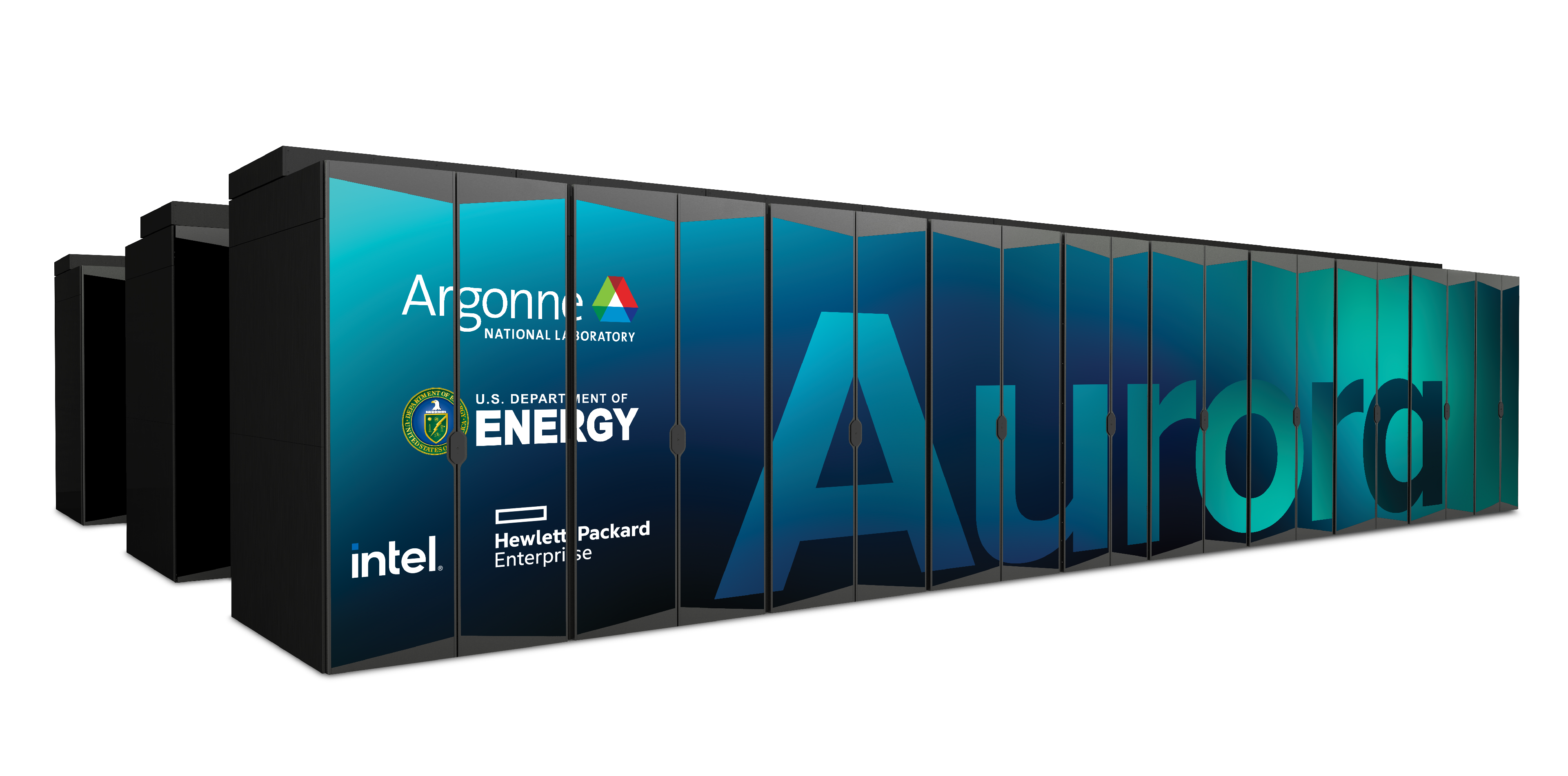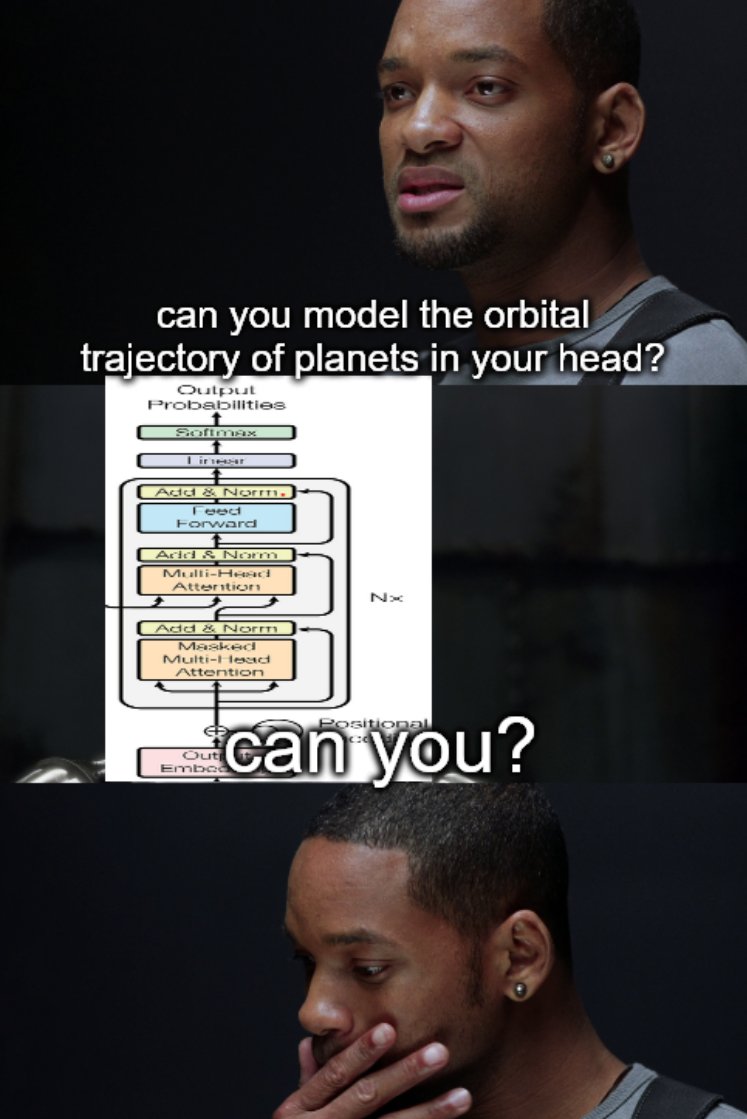AuroraGPT
Large Scale Training on Diverse Accelerators
🎯 AuroraGPT: Goals
AuroraGPT: General purpose scientific LLM Broadly trained on a general corpora plus scientific {papers, texts, data}
- Explore pathways towards a “Scientific Assistant” model
- Build with international partners (RIKEN, BSC, others)
- Multilingual English, 日本語, French, German, Spanish
- Multimodal: images, tables, equations, proofs, time series, graphs, fields, sequences, etc
Awesome-LLM
🧪 AuroraGPT: Open Science Foundation Model
🧰 AuroraGPT: Toolbox
- Datasets and data pipelines (how do we deal with scientific data?)
- Software infrastructure and workflows (scalable, robust, extensible)
- Evaluation of state-of-the-art LLM Models (how do they perform on scientific tasks?)
🚂 Training
argonne-lcf/Megatron-DeepSpeed
Large Model Training: Any Scale, Any Acclerator
🏃♂️ Running
argonne-lcf/inference-endpoints
Inference endpoints for LLMs, hosted @ ALCF
🌌 Aurora
| Racks | 166 |
| Nodes | 10,624 |
| CPUs | 21,248 |
| GPUs | 63,744 |
| NICs | 84,992 |
| HBM | 8 PB |
| DDR5c | 10 PB |
🤝 Teams
- Planning
- Data
- Aggregate existing data and generate new (synthetic) data
- Models / Training1
- Pre-train a series of models on publicly available data
- Post-Training
- Fine-tuning, alignment, reinforcement learning
- Evaluation
- Skills, trustworthiness, safety, robustness, privacy, machine ethics
- Inference
- Model serving, API development / public-facing web services
- Distribution
- Licensing, generating and distributing artifacts for public consumption
- Communication
🍎 Training LLMs
- Want to minimize cost of training
Maximize throughput(?)- Data parallelism takes us only so far (McCandlish et al. 2018)…
- Possible directions:
- Large batch training (?)
- new (second order?) optimizers
- Better tokenization schemes (no tokenizers ?)
- Better data (?)
- Alternative architecture(s) (?)
- Diffusion / flow-matching
- Sub-quadratic attention (state space models, …)
- Large batch training (?)
🎯 Goals
We need our implementation1 to be:
- 💯 Correct
- Consistent across systems
- Requires being able to run the same code on multiple different machines
- Independent of hardware and communication library (e.g.
CUDA,ROCm,XPU,CPU,MPS, …)
- 🚀 Scalable
- Performant across thousands of GPUs
- Highly configurable and extensible
- Parallelizable across (tensor, pipeline, sequence) dimension(s)
- Robust against {hardware, network, filesystem, transient} failures2
🏋️ Challenges: In Practice
This is incredibly difficult in practice, due in part to:
- Brand new {hardware, architecture, software}
- Lack of native support in existing frameworks (though getting better!)
- General system stability
+10k Nodes (×1Node12XPU)⇒ +100k XPUs- network performance
- file system stability (impacted by other users !)
- many unexpected difficulties occur at increasingly large scales
- Combinatorial explosion of possible configurations and experiments
- {hyperparameters, architectures, tokenizers, learning rates, …}
💾 Training: 2T Tokens
- To train a fixed model on trillions of tokens requires:
- Aggregating data from multiple different corpora
(e.g. ArXiv, Reddit, StackExchange, GitHub, Wikipedia, etc.) - Sampling each training batch according to a fixed distribution across corpora
- Building indices that map batches of tokens into these files (indexing)
The original implementation was slow:
- Designed to run serially on a single device
- Major bottleneck when debugging data pipeline at scale
- Aggregating data from multiple different corpora
🍹 Blending Data, Efficiently
📉 Loss Curve: Training AuroraGPT-7B on 2T Tokens
✨ Features
- 🕸️ Parallelism:
- {data, tensor, pipeline, sequence, …}
- ♻️ Checkpoint Converters:
- Megatron ⇄ 🤗 HF ⇄ ZeRO ⇄ Universal
- 🔀 DeepSpeed Integration:
- ZeRO Offloading
- Activation checkpointing
- AutoTP (WIP)
- ability to leverage features from DeepSpeed community
✨ Features (even more!)
- 🧗 Optimizers1:
- Support for many different optimizers:
- Distributed Shampoo, Muon, Adopt, Sophia, Lamb, GaLORE, ScheduleFree, …
- See full list
- Large batch training
- Support for many different optimizers:
- 📊 Experiment Tracking:
- Automatic experiment and metric tracking with Weights & Biases
🔭 LLMs for Science
ChatGPT: explain this image
🤔 Evaluating Models on Scientific Applications
- What to measure?
- Knowledge Extraction, Retrieval, Distillation, Synthesis: LLM is provided a question or instruction and a truthful answer is expected
- Text Grounded: Answers are expected to be fully grounded on peer-reviewed references to support responses
- Reasoning: LLMs are expected to solve deductive (prove a theory or hypothesis from formal logic and observations), inductive (validate / explain observations from theories) problems
- Creativity: A creative answer is expected from a question or instruction
- thoughtful dialogue, coding, etc.
⚖️ Evaluating FM Skills for Science: Criteria
- Criteria for all of the above:
- Correctness of facts
- Accuracy of solutions and inferences
- Reliability consistently good in quality or performance
- Speed how fast to produce a response
- # shots how many examples are needed for good quality
- Extent of prompt engineering
🧬 MProt-DPO: Scaling Results
~ 4 EFLOPS @ Aurora
38,400 XPUs
= 3200 [node] x 12 [XPU / node]🔔 Gordon Bell Finalist1:
🧬 MProt-DPO: Scaling Results
🚂 Loooooooooong Sequence Lengths
- Working with Microsoft/DeepSpeed team to enable longer sequence lengths (context windows) for LLMs
- See my blog post for additional details
SEQ_LEN for both 25B and 33B models (See: Song et al. (2023))
📓 References
- argonne-lcf /
Megatron-DeepSpeed
For the largest of large language models. - saforem2 /
ezpz
Distributed training, ezpz. 🍋 - 📊 See my other slides at samforeman.me/talks:
❤️ Thank you!
🙏 Acknowledgements
This research used resources of the Argonne Leadership Computing Facility, which is a DOE Office of Science User Facility supported under Contract DE-AC02-06CH11357.
📑 Bibliography
- Refs:
- Wei et al. (2022)
- Animations from The Illustrated Transformer



